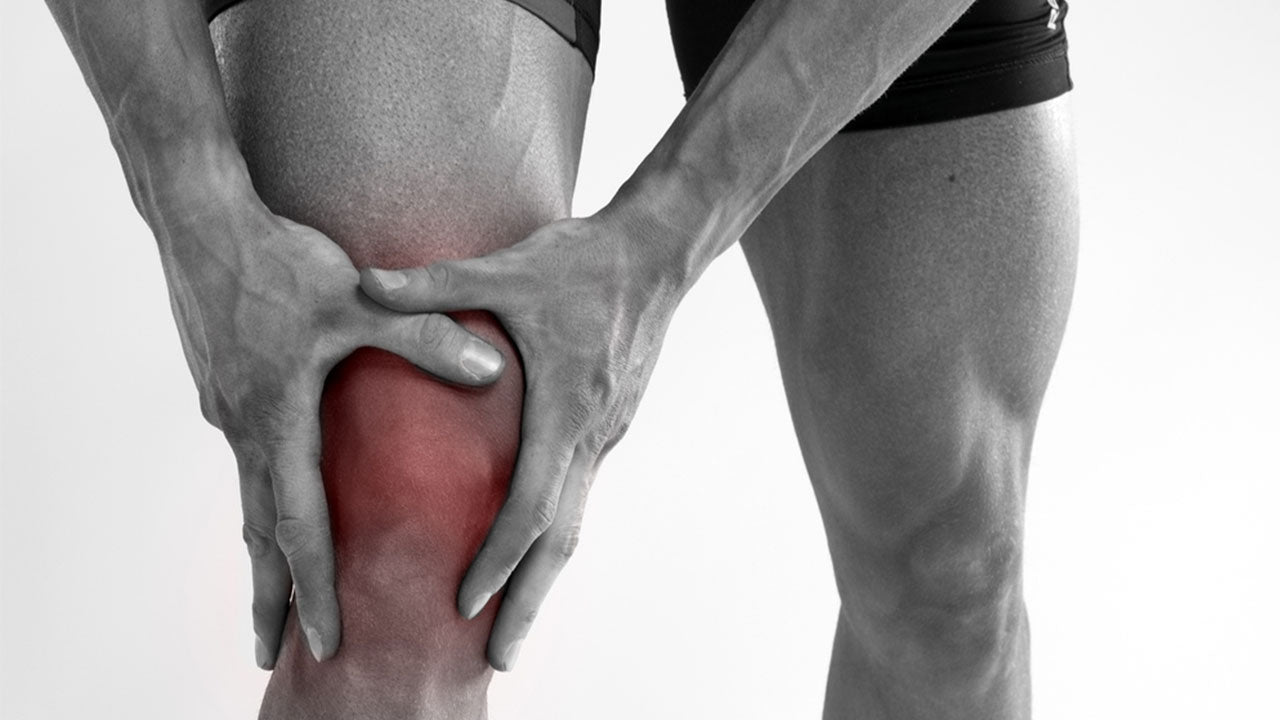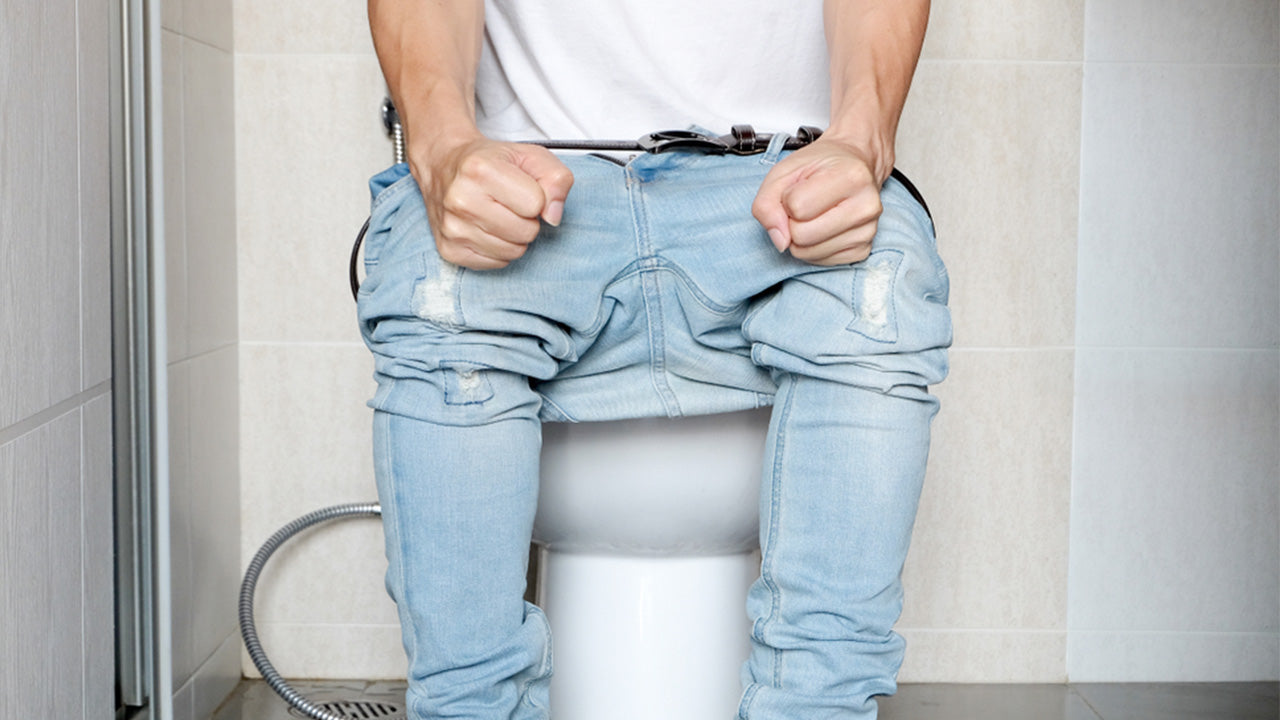Patellar Tendon Tear: Symptoms, Treatment and Recovery
 By: by Amino Science
By: by Amino Science

In a lot of ways, our bodies are strung together like a puppet or marionette, the strings being our tendons, ligaments, and other connective fibers and tissues. An injury, rupture, or tear to any one of these "strings" can slow down or even incapacitate the body. Tendons are the strings that connect muscles to bone, and yet the patellar or patella tendon, though so named, is actually a ligament in the knee. This article has the details regarding what causes a patellar tendon tear, how to identify it, plus how best to recover your full range of motion.
Tendons vs. Ligaments: The Anatomy of the Knee
The knee joint is the meeting place of various bones (the thigh bone, shinbone, and kneecap, otherwise known as the patella), muscles (quadriceps, hamstrings, and calf muscles), and connective tissues (tendons, ligaments, cartilage, and more). The muscles are connected to the bones via tendons, while the bones are connected to each other via ligaments.
The patellar tendon is often referred to as the patellar ligament because it connects the bottom of the kneecap to the top of the shinbone (bone to bone connection). However, it is actually an extension of the quadriceps tendon, which connects the quadriceps muscle to the shinbone, which is why patellar tendon (muscle to bone connection) is the more popular terminology and the one most commonly used in sports medicine and orthopedics. Working in concert, these connective tissues allow us to straighten our knees.
What Is a Patellar Tendon Tear?
A patellar tendon rupture or tear can range from mild to severe, partial to complete. Patellar tendonitis, for example, is the result of microtears sustained during misuse, overuse, or overextension, and while it often causes symptoms of knee pain, that pain is mild in comparison to what's felt during a partial tear of the tendon or a complete tear, which rips the soft tissue of the tendon into two distinct pieces.
A complete tear of the patellar tendon indicates a detachment of the kneecap from the shin and is accompanied by an inability to straighten your knee. This medical condition requires immediate intervention from an orthopedic surgeon, as sometimes a piece of the patella bone may break off along with the tendon and cannot reattach on its own.
Patellar Tendon Tear: Causes
Sports players have higher risk factors for knee injuries, as do the elderly who may suffer from accidental falls. Here are some of the common causes of complete rupture or tear of the patellar tendon.
- Injury: A sports collision, fall, or car accident could cause violent injury to the front of the knee, as could landing badly from a jump—most patellar tears happen when the knee is bent and the foot is planted on the ground, as when impacting from a jump or an accidentally missed step downstairs.
- Tendon weakness: Chronic patellar tendinitis (also spelled tendonitis) weakens the tendon over time and is the culprit behind the condition colloquially referred to as "jumper's knee." A weakened tendon is more likely to tear than a strong, healthy one.
- Joint weakness: If the knee joint is in a weakened state due to osteoporosis or osteoarthritis (degenerative joint disease), injury to the patellar tendon and the other ligaments in the joint is more likely to occur.
- Steroids: Steroid use or corticosteroid injections are known to weaken the patellar tendon and surrounding tissues, which increases the risk of injury or tear.
- Reduced blood supply: Chronic conditions that may reduce necessary blood supply to the knee and weaken the area include rheumatoid arthritis, metabolic disease, diabetes mellitus, chronic renal failure, hyperbetalipoproteinemia, systemic lupus erythematosus (SLE), or infection.
- Surrounding surgery: If you need to undergo a knee surgery such as anterior cruciate ligament reconstruction or total knee replacement, you may be more prone to injuring your patellar tendon during recovery.

Patellar Tendon Tear: Symptoms
The first step to regaining full recovery of your range of motion is to quickly identify an injury to the patellar tendon. The symptoms of a partial or complete patellar tendon tear may include:
- A popping or tearing sensation at the time of injury
- Pain and swelling of the knee
- Bruising
- Tenderness
- An indentation below the kneecap where the tendon may have torn
- A traveling kneecap (the patella may move up into the thigh area if it is no longer attached to the shinbone)
- Cramping
- Inability to straighten your knee, difficulty walking, or a buckling or "giving way" sensation under weight-bearing
Patellar Tendon Tear: Diagnosis
Once you've noticed an issue and you visit a medical professional for advice, the diagnosis of a patellar tendon tear may include the following.
- Medical history: By taking a verbal medical history, doctors may quickly narrow down the possible causes of the knee pain you're experiencing. According to the American Academy of Orthopaedic Surgeons, questions may include, "Have you had any previous knee injuries?" and "Do you have any medical conditions that affect your knees?"
- Knee extension test: The physical examination may include a knee extension test to isolate whether you're dealing with quadriceps tendon rupture or a patellar tendon injury.
- Imaging tests: X-rays may be ordered to rule out or determine the extent of bone involvement in your injury, while an MRI (magnetic resonance imaging) can help the doctor visualize the state of your soft tissues at the location of the tear and recommend treatment options.
Patellar Tendon Tear: Treatment
Depending on your age, activity level, and the nature of your patellar tendon tear, treatment options may vary.
- Nonsurgical options: Using orthotics such as a knee brace or attending physical therapy appointments can help a partial tear heal or correct patellar tendinopathy before it leads to more serious damage.
- Surgical options: A complete tear most likely requires surgical repair to reattach the tendon (though it may not be possible if you're in ill health, are immunocompromised, or if there isn't enough healthy tissue remaining to reattach).
Reattaching a torn tendon has the best results if it's done as soon as possible after the injury, because a delay could give the tendon time to begin scarring, tightening, and shortening, making it impossible to reconnect the ends cleanly. Such a situation may require a tissue graft from another part of your body or from a donor body (an allograft) to make up for the missing distance.
During the procedure, the surgeon sutures the tendon together and drills holes in your kneecap to then anchor those sutures to the bone for increased stability. Patellar tendon repair is delicate work that requires achieving the correct tension to maintain the extensor mechanism of the knee, which consists of the interworking relationship between the quadriceps muscle, the quadriceps tendon, the patella, the patellar retinaculum, the patellar tendon, and the surrounding soft tissues. It's also important for the doctor to closely match the tension of your injured knee with the range of motion you have in the uninjured knee (assuming of course that your injury isn't in both knees, as it might be if your knees collided with the dashboard in a car accident).
Your doctor will discuss with you beforehand the materials used in the procedure. Wire sutures or cables will need to be later removed with another surgery but are more stable for the initial recovery. Dissolvable sutures mean no future removal surgery, but may not be strong enough to hold your particular injury in place.
Patellar Tendon Tear: Recovery
Complications even after a successful surgery could involve weakness in the joint and a partial loss of your range of motion. Reinjury is more likely in this instance, so recovery support is essential. Here are some recovery tips that may help in both surgical and nonsurgical patellar tendon tear recovery.
1. Amino Acid Supplements
When healing soft tissue like tendons, ligaments, and muscle, proper amino acid support is imperative; specifically, the nine essential amino acids that we can only acquire from outside the body, either protein foods like meat, eggs, dairy, and beans, or supplements.
Without a sufficient supply of all these amino acids, our bodies often harvest healthy cells to rebuild new tissues, so in any instance of recovery (and especially after surgery), it's important to increase your protein consumption and ensure that you have a comprehensive amino acid intake.
Even with the best of luck and no complications, complete recovery takes an average of 6 months, with some patients needing a year or more to return to their pre-injury activities. Supplementing with amino acids can help shorten your recovery time.
2. Targeted Stretches
It's recommended that you consult a licensed physical therapist at least once even if your knee pain is only the result of mild patellar tendonitis. While there are stretches we can suggest, a trained physical therapist can evaluate your individual needs and limits, plus correct your form so you don't accidentally damage your body by performing the stretches incorrectly. The most commonly advised exercise in an instance of patellar injury is straight-leg raises, seen here:
You can strengthen your legs around bad knees and prevent pain by following these instructions.
- Lie on your back on a floor or firm, flat surface, and bend one knee at a 90-degree angle, planting that foot on the floor.
- Contract the quadriceps (front of the thigh) in your straightened leg to stabilize the leg before lifting it.
- While inhaling, lift your straight leg 6 inches off the ground and hold for 3 seconds.
- While exhaling, lower the leg slowly back to the floor.
- Relax, and then repeat at least 10 times before switching and doing the same with the other leg.
3. Support Gear
Wearing a knee sleeve while you recover and during future sporting activity helps keep the knee in place while it heals and lends extra strength and support that may help you avoid reinjuring the patellar tendon or other parts of the knee joint due to patellar weakness.
Trounce Patellar Tears
Full recovery from patellar tendon tears is very doable, as most people return to all their former activities in the long run. The leg may feel stiff going forward, but that is a small complaint in the grand scheme if you can return to beloved sporting activities and daily movements again. Once your recovery is underway, be sure to give your knees and tissues the TLC they need with targeted nutrition, exercise, and support going forward.

Up to 25% off Amino
Shop NowTAGS: injury
Join the Community
Comments (0)
Most Craveable Recipes




 833-264-6620
833-264-6620



















